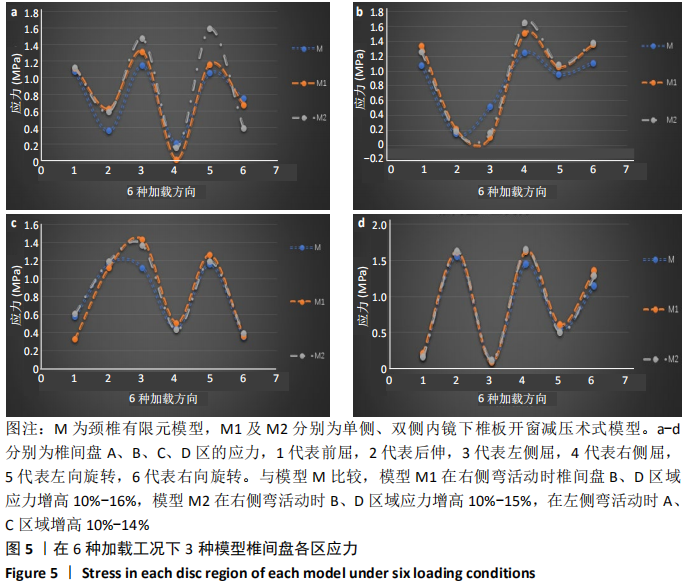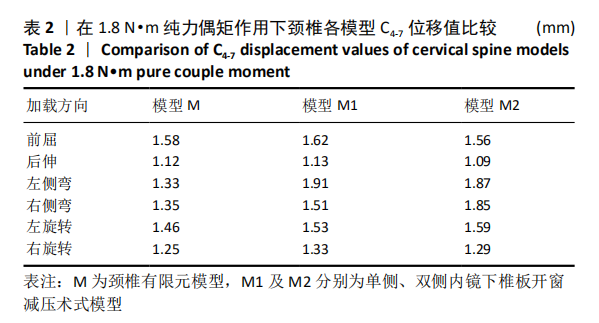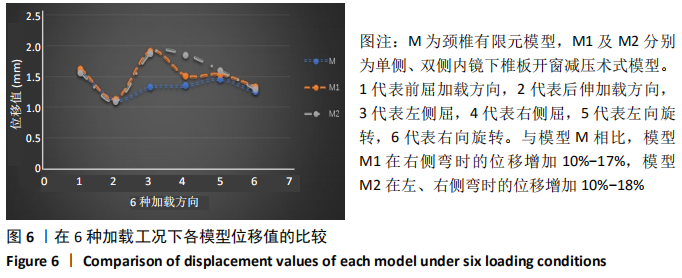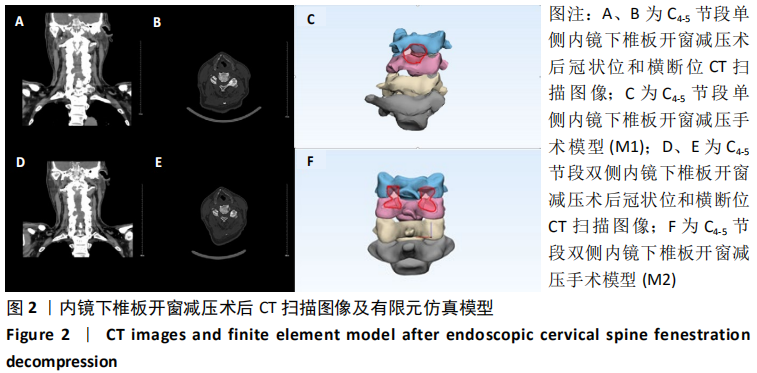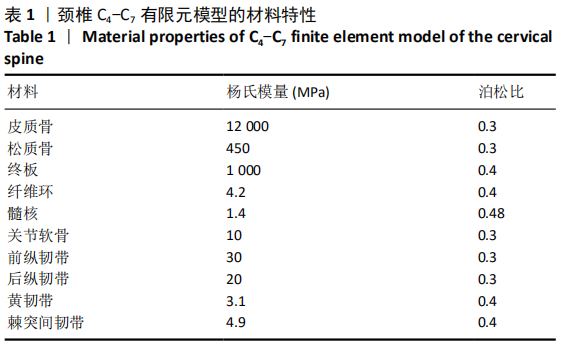中国组织工程研究 ›› 2021, Vol. 25 ›› Issue (24): 3850-3854.doi: 10.12307/2021.091
• 骨与关节生物力学 bone and joint biomechanics • 上一篇 下一篇
有限元分析全可视化内镜下椎板开窗减压治疗脊髓型颈椎病的生物力学特点
刘金玉1,丁逸苇2,卢正操1,高天君1,崔洪鹏1,李 雯1,杜 薇1 ,丁 宇1
- 1解放军总医院中医医学部骨伤科,北京市 100048;2纽约大学工程学院2019级,美国纽约市 NY 11201
Finite element biomechanical study of full endoscopic fenestration decompression for cervical spondylotic myelopathy
Liu Jinyu1, Ding Yiwei2, Lu Zhengcao1, Gao Tianjun1, Cui Hongpeng1, Li Wen1, Du Wei1, Ding Yu1
- 1Department of Orthopedics of TCM Clinical Unit, PLA General Hospital, Beijing 100048, China; 2School of Engineering Grade 2019, New York University, New York 11201, NY, USA
摘要:
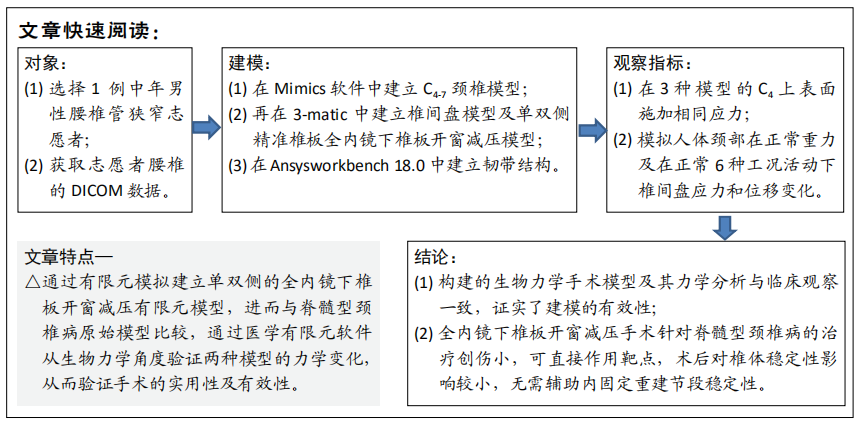
文题释义:
颈椎有限元手术模拟建模:模型首先通过获取人体腰椎CT资料,以DICOM 格式导入Mimics 软件中建立C4-7模型,再运用3-matic 建立椎间盘和手术模型。将建好的模型进行网格划分,在Ansysworkbench 18.0中进行材料赋值及韧带添加,同时进行相关力学分析。
脊髓型颈椎病:是指由于颈椎管狭窄、椎体后缘骨赘增生、后纵韧带钙化、椎间隙狭窄和椎间盘突出压迫脊髓而导致的临床综合征,以40-60岁多见,起病慢,约20%有外伤史,产生机制是由于致压物对椎体束(皮质脊髓束)的直接压迫或局部血供减少引起,临床表现先从单侧或双侧下肢发沉、无力、发麻开始,随之出现行走困难、双足踩棉花感觉、胸腹束带感等。
背景:颈椎内镜下椎板开窗减压术中切除椎板及小关节时如处理不当易导致颈椎结构改变,进而引起节段生物力学变化,远期发生颈椎退变加速、椎体不稳等情况,临床亟需了解颈椎全内镜下椎板开窗减压术对节段生物力学的影响及其相关解剖关系。
目的:应用有限元逆向工程技术精准模拟内镜下椎板开窗减压术治疗脊髓型颈椎病的三维有限元模型,进行生理状态下的颈椎生物力学研究。
方法:获得1名志愿者的颈椎CT平扫数据,导入MIMICS 20.0软件中,建立C4-7有限元模型M。将模型M导入3-matic软件,模拟单侧C4-5椎板开窗模型M1及双侧C4-5椎板开窗模型M2。在ANSY Sworkbench 18.0软件中对以上3种模型施加生理活动时同等载荷的压力和扭矩,对比分析6种工况(左/右侧弯、前屈、后伸、左/右向旋转运动)下的生物力学变化。
结果与结论:①与模型M椎间盘所受应力比较,模型M1在右侧弯时椎间盘B、D区域应力值增高10%-16%,模型M2在右侧弯时椎间盘B、D区域应力值增高10%-15%,在左侧弯时椎间盘A、C区域应力值增高10%-14%;与模型M椎间盘位移比较,模型M1在左侧弯时椎间盘位移值增高10%-17%,模型M2在左/右侧弯时椎间盘位移值增高10%-18%;其他工况下3个模型C4-5椎间盘所受应力及位移值均无明显差异;②结果表明,经皮内镜下颈椎椎板开窗减压术治疗脊髓型颈椎病可实现精准可控,单侧或双侧切除部分椎板及关节突关节1/2以内对手术节段生物力学稳定性影响小,无需辅助内固定重建节段稳定性。
https://orcid.org/0000-0002-9345-0515 (刘金玉)
中国组织工程研究杂志出版内容重点:人工关节;骨植入物;脊柱;骨折;内固定;数字化骨科;组织工程
中图分类号:
